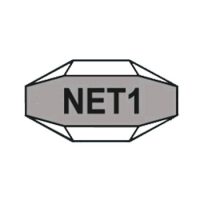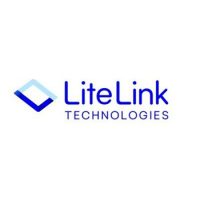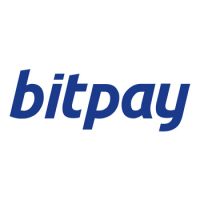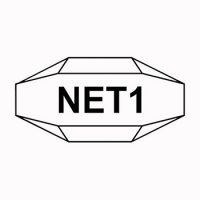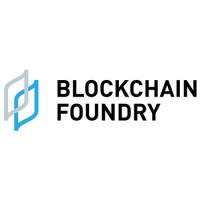Blockchain
iPay Launches as a De Facto Payment Gateway for Content Creators in Web 3.0

iPay, a payment solution for one of today’s fastest-growing business areas in the creator economy launches as a de facto payment gateway for content creators in web 3.0.
Web 2.0 platforms are no longer relied upon by creators for the infrastructure that they have traditionally given in order to make money. Creators are migrating their audience away from larger platforms and onto their own websites and apps to adopt new monetization strategies. The power of creators can encourage widespread adoption of cryptocurrencies by providing direct, secure, and fast transactions. A currency designed specifically for the creative economy can serve as a monetization tool as well as an investment vehicle for holding and appreciating the value that creators make collectively. iPay aims to use breakthrough blockchain technology to become the major money and method of safe, anonymous virtual transactions for industries not limited to: mainstream/adult creators, gaming, gambling, and more, including their migration to the metaverse.
Digital content providers can use platforms like iFans to develop an online community and sell their work directly to their followers and subscribers. iFans is enabled by a digital paywall for direct monetization, unlike social networking networks where users generate money indirectly through advertisements placed within their content. Even if they don’t want to work full-time as a digital content developer, they can make money by selling their work on iFans in their leisure time.
As more creators, creative platforms, and industries spurned by banks and big tech flock to iPay, they will be able to take advantage of not only all of the benefits we’ve listed, but also serve as a repository for the enormous appreciating value they’re generating collectively.
iPay is much more than a utility token. Its chances would be excellent if that were the only factor. However, the goal is to present it as a game-changer by realizing the vast and explosive value that the creator, adult, and gaming sectors generate collectively through a token and the transactions conducted through it.
With the expansion of these industries into the virtual reality metaverse, the growing market for NFTs within them, the need for secure and anonymous virtual payment solutions, and the rapid adoption of cryptocurrencies, iPay will be positioned as the right token, in the right place, with the right ideas and vision, at the right time.
iPay aims to become the biggest payment corridor for content creators
The current value of the creator economy is 104 billion dollars, with a forecast of 5.25 trillion dollars by 2030. The current worth of the cryptocurrency market is 2.5 trillion dollars, and it is expected to grow to 250 trillion dollars by 2030. The market for NFTs is currently worth $100 million. And by 2030, the market is predicted to have grown 2000 times to a value of 204 billion dollars. The current market value of the metaverse is $47 billion. This market is expected to grow to a size of $2.4 trillion.
All of this suggests that in the next 10 years, the number of crypto transactions will increase by a factor of five. The creators and those who appreciate their products will be the key engines of this growth, and iPay is positioned in this arena to benefit from it. Consider what it would be like if those who used iPhones could also invest in and benefit from the device’s growing popularity. This is one of the key advantages of utilizing iPay over the existing field of cryptocurrencies, which will develop at an exponential rate over the next decade in terms of usage and market.
iPay creates a safe, anonymous means for virtual transactions to be put into direct use and serve as a mode of investment in the industries which are set to fuel and benefit most from the exponential growth of these markets.
Use cases are frequently seen as the alpha and omega of possible success in the crypto coin arena. Moreover, in the best cases, coins can be used as acceptable methods of payment or tied to a specific utility. iPay has a major advantage in this industry because by the time of its launch it will already be integrated in the multi-million dollar iFans platform and a few others. In this initial beta phase of integration onto a major creator platform, iPay will be able to incentivize and perfect modes of adoption by fans and creators. The objective is to draw in other platforms including brick and mortar businesses that may be looking to expand into streaming services, virtual reality, and migration to the metaverse.
Some of these potential partnerships are already in an early phase of development and integration. Factoring in all of these potential market opportunities, iPay aims to become a major player in these fast developing sectors. These sectors include the incredible growth of collectibles in the form of NFTs. In the near term, iFans will be the first platform to host an exclusive marketplace offering NFTs only available for purchase with iPay. In the longer term, the team behind iPay will be preparing the tools needed for all partners and platforms to integrate their offerings into the metaverse. To achieve this, they have the advantage of working with long-standing personal contacts who have for the last decade been constructing the metaverse’s architecture and underlying technology.
Blockchain
EAT & BEYOND ANNOUNCES PROPOSED NAME CHANGE AND UPDATED INVESTMENT POLICY
Blockchain
Blocks & Headlines: Today in Blockchain – May 30, 2025 (Fraser Edwards, Kyiv NFT, Spirit Blockchain Capital, Indian eHealth, Hedera)

Blockchain technology and cryptocurrencies continue to redefine industries—from competitive gaming and cultural heritage preservation to corporate finance, healthcare, and alternative tokens. Today’s briefing highlights five pivotal developments shaping the ecosystem: Fraser Edwards’s vision for trust in eSports; Ukraine’s wartime cultural preservation via NFTs; Spirit Blockchain Capital’s Q1 2025 operational report; India’s push for blockchain-enabled electronic health records (EHRs); and the rise of viral altcoins such as UniLabs, Sui, and Hedera Hashgraph. Together, these stories illustrate the themes of trust and identity, preservation and provenance, institutional maturation, public-sector innovation, and token diversification. In this op-ed–style round-up, we distill the essence of each story, cite sources, and offer analysis on how they advance Web3, DeFi, and NFT frontiers.
1. Rebuilding Trust in eSports: Can Blockchain Fix Competitive Integrity?
Source: CCN
Summary:
In a recent CCN interview, veteran trader and eSports investor Fraser Edwards argues that blockchain’s immutable ledgers can restore credibility in the rapidly commercializing world of competitive gaming. According to Edwards, match-fixing scandals and opaque prize-pool distributions have eroded fan confidence. By tokenizing tournament entries and payouts on public blockchains—complete with smart-contract–enforced escrow—organizers can guarantee that prize monies are distributed exactly as advertised, and that no post-match manipulation occurs. Tournament operators in Asia and North America are already piloting Ethereum-based payout dApps, aiming to increase transparency for players and sponsors alike.
Key details & analysis:
-
Smart-contract escrow: Funds are held in a time-locked contract that releases prize money only upon verifiable match results. This prevents disputes over referee decisions or delayed payments.
-
On-chain reputation: Player and team reputations can be tokenized via non-fungible reputation badges that accrue based on fair play and community votes—discouraging cheating.
-
Scalability concerns: High-traffic tournaments may require Layer 2 rollups or alternative chains (e.g., Polygon, Immutable X) to reduce gas costs and latency.
Opinion: Blockchain’s dual promise of provable fairness and programmable finance makes it uniquely suited to eSports. Yet adoption hinges on UX: seamless wallet integrations, minimal transaction fees, and clear regulatory guidance on esports tokens.
2. When Art Meets Blockchain: Ukraine’s Wartime Cultural Preservation
Source: The Kyiv Independent
Summary:
As monuments crumble under artillery fire, Ukrainian curators and technologists are partnering to mint NFTs representing lost or endangered artifacts. The Kyiv Independent reports that the National Art Museum of Ukraine has launched “Project Phoenix,” tokenizing high-resolution 3D scans of sculptures, manuscripts, and paintings. Proceeds from initial sales fund restoration and digital archiving efforts. Each NFT embeds provenance metadata—including GPS coordinates, curator notes, and condition reports—ensuring that future generations can verify authenticity and context, even if the physical artifact is destroyed.
Key details & analysis:
-
Metadata richness: Beyond simple ownership, NFTs store structured metadata—using ERC-721 metadata extensions—that capture curatorial insights and conservation logs.
-
Decentralized archives: IPFS and Arweave are employed to host ultra-high-resolution imagery, with on-chain hashes guaranteeing data integrity.
-
Community engagement: Fractional-NFT drops allow diaspora communities to collectively own tokens, strengthening cultural ties and crowdfunding preservation.
Opinion: Blockchain’s ability to immutable record heritage provides a lifeline for war-torn nations. However, ensuring that local institutions retain governance over metadata edits and future migrations is critical to avoiding “cultural colonialism” by global NFT marketplaces.
3. Spirit Blockchain Capital’s Q1 2025 Highlights: Growth, Investments, and Outlook
Source: GlobeNewswire
Summary:
Spirit Blockchain Capital’s Q1 2025 report benchmarks the firm’s operational milestones and financial performance. Assets under management (AUM) climbed 45% to $1.02 billion, driven by strategic allocations to top-tier Layer 1 and Layer 2 protocols, DeFi liquidity pools, and a newly launched token-index fund. Operating income rose 37%, fueled by management fees and performance incentives. The firm also closed its second blockchain-focused venture fund at $150 million, earmarked for early-stage Web3 projects in gaming, infrastructure, and decentralized identity.
Key details & analysis:
-
Diversification strategy: 60% of AUM in blue-chip cryptocurrencies (Bitcoin, Ethereum); 25% in DeFi (Aave, Uniswap, Lido); 15% in tokenized commodities and NFTs.
-
Fund performance: The flagship fund delivered a 9.8% return in Q1, outperforming the 6.2% benchmark set by the Bloomberg Galaxy Crypto Index.
-
Venture investments: Early stakes in zero-knowledge proof startups and decentralized storage platforms signal confidence in scalability and privacy innovations.
Opinion: Spirit’s robust growth and disciplined diversification mirror institutional maturation in the blockchain asset management space. As regulatory clarity improves, expect further inflows from endowments, pensions, and family offices.
4. Blockchain EHRs in India: The Next Digital Health Revolution
Source: ORF
Summary:
The Observer Research Foundation (ORF) details India’s pioneering pilot of blockchain-backed electronic health records (EHRs) in the state of Andhra Pradesh. By leveraging a permissioned Hyperledger Fabric network, the initiative ensures that patient records—from vaccination histories to diagnostic imaging—are securely shared across hospitals, clinics, and pharmacies. Patients control access via digital identities anchored to India’s Aadhaar system, granting temporal permissions for data viewing and preventing unauthorized sharing.
Key details & analysis:
-
Interoperability: HL7 FHIR standards are mapped to on-chain transactions, enabling seamless data exchange with existing hospital information systems (HIS).
-
Privacy safeguards: Off-chain storage of PHI (Protected Health Information) is encrypted with patient-held keys; only hashed pointers reside on-chain to ensure immutability without exposing sensitive data.
-
Regulatory alignment: The pilot aligns with India’s draft Digital Health Act, which emphasizes data sovereignty and patient consent frameworks.
Opinion: Blockchain EHRs can democratize healthcare access in a populous nation—but success depends on user-friendly portals, robust identity verification, and contingency plans for network outages in rural areas.
5. The Hottest Viral Altcoins of 2025: UniLabs, Sui, and Hedera Lead the Pack
Source: TronWeekly
Summary:
According to TronWeekly, the altcoin landscape in 2025 is dominated by three viral tokens: UniLabs (UNI-L), Sui (SUI), and Hedera Hashgraph (HBAR). UniLabs, a governance token for a decentralized laboratory network, saw a 1,200% year-to-date surge on news of its AI-driven drug-discovery partnership. Sui’s Move-based smart-contract platform gained traction for sub-second finality and low gas fees, with total value locked (TVL) surpassing $2 billion. Hedera’s HBAR continues its enterprise pivot, securing multi-year agreements with global brands for identity verification and supply-chain tracking.
Key details & analysis:
-
UniLabs use case: Token holders vote on research grants and share in royalty revenues from patented compounds developed on-chain.
-
Sui performance: With a novel object model and horizontal sharding, Sui supports over 3,000 TPS (transactions per second) without compromising on decentralization.
-
Hedera enterprise: The Governing Council—comprising Boeing, Google, and LG—bolsters confidence in HBAR’s governance model and paves the way for compliant enterprise deployments.
Opinion: These tokens exemplify the diversification of blockchain applications. Investors should assess not only market hype but also protocol fundamentals—developer activity, economic incentives, and real-world adoption.
Cross-Story Trends & Key Takeaways
-
Trust & Transparency at the Core
From esports prize-pool ledgers to wartime NFT archives and permissioned health records, blockchain’s immutability fosters verifiable trust—a prerequisite for mainstream adoption across sectors. -
Institutional & Public-Sector Innovation
Spirit Blockchain Capital’s fund growth and India’s EHR pilot signal that both private and government entities view blockchain as a strategic infrastructure, not just speculative assets. -
Vertical Specialization Fuels Token Growth
Viral altcoins like UniLabs, Sui, and Hedera thrive by addressing niche use-cases—governance in biotech, scalable DeFi rails, and enterprise identity—underscoring the importance of purpose-built protocols. -
Metadata & Provenance Drive NFTs Beyond Art
Ukraine’s cultural NFTs demonstrate how rich on-chain metadata can preserve heritage, while esports applications show that reputation tokens can enforce fair-play credentials. -
Ecosystem Maturation Requires UX & Governance
Across all stories, user experience—wallet onboarding, identity verification, metadata curation—and robust governance frameworks (tokenomics, regulatory alignment) emerge as decisive factors in blockchain’s next wave.
Conclusion
Today’s blockchain headlines reveal a maturing ecosystem where trust, transparency, and targeted innovation unlock new frontiers—from safeguarding digital heritage amid conflict to revolutionizing healthcare and sports. As institutional players allocate billions, and public-sector pilots chart regulatory pathways, the fate of tomorrow’s Web3 landscape hinges on seamless UX, rigorous governance, and demonstrable real-world utility. Stay tuned for tomorrow’s Blocks & Headlines, where we’ll continue tracking the trends, tokens, and technologies that define the blockchain revolution.
The post Blocks & Headlines: Today in Blockchain – May 30, 2025 (Fraser Edwards, Kyiv NFT, Spirit Blockchain Capital, Indian eHealth, Hedera) appeared first on News, Events, Advertising Options.
Blockchain
Kyrgyz Republic to launch USDKG, a gold-backed stablecoin pegged to the U.S. Dollar, in Q3 2025

USDKG
-

 Blockchain Press Releases3 days ago
Blockchain Press Releases3 days agoRain Expands Support to Solana, Tron, and Stellar, Enabling More Partners to Launch Stablecoin-powered Card Programs
-

 Blockchain Press Releases3 days ago
Blockchain Press Releases3 days agoBybit Secures MiCAR License in Austria, Opens European Headquarters in Vienna with Strategic Expansion Plan
-

 Blockchain Press Releases6 days ago
Blockchain Press Releases6 days agoFlipster Reveals Middle East Expansion Plans and Appoints Regional Leadership to Bolster Crypto Trading
-

 Blockchain3 days ago
Blockchain3 days agoBlocks & Headlines: Today in Blockchain – May 29, 2025 (Vaulta, Fosun, Signing Day Sports, Credit Unions, Gaming Innovations)
-

 Blockchain Press Releases5 days ago
Blockchain Press Releases5 days agoCoinW Teams Up with Superteam Europe to Conclude Solana Hackathon and Accelerate Web3 Innovation in Europe
-

 Blockchain5 days ago
Blockchain5 days agoBlocks & Headlines: Today in Blockchain – May 27, 2025 Featuring Blockchain.com, Bilal Bin Saqib, XRP Ledger, Unstoppable Domains, ReNEW, MEXC Ventures
-

 Blockchain6 days ago
Blockchain6 days agoBlocks & Headlines: Today in Blockchain – May 26, 2025 (Lightchain AI, Cetus Hack, Bilal Bin Saqib, The Blockchain Group)
-

 Blockchain Press Releases7 days ago
Blockchain Press Releases7 days agoAB Charity Foundation X AB Blockchain Join Forces to Advance the Global “Tech for Good” Mission




















